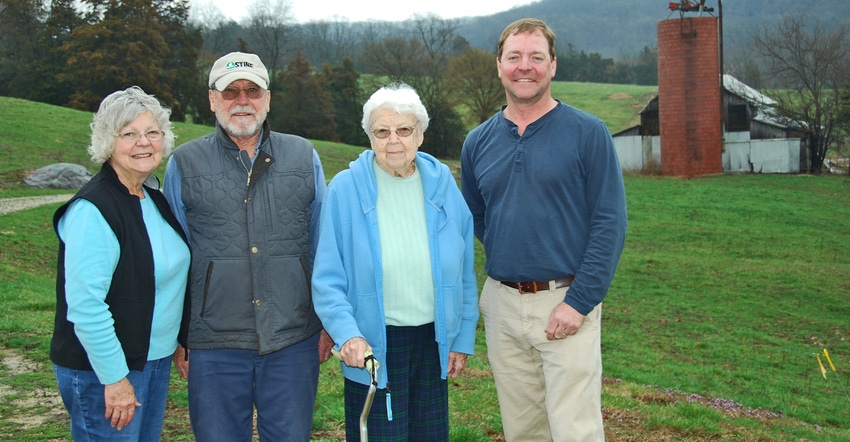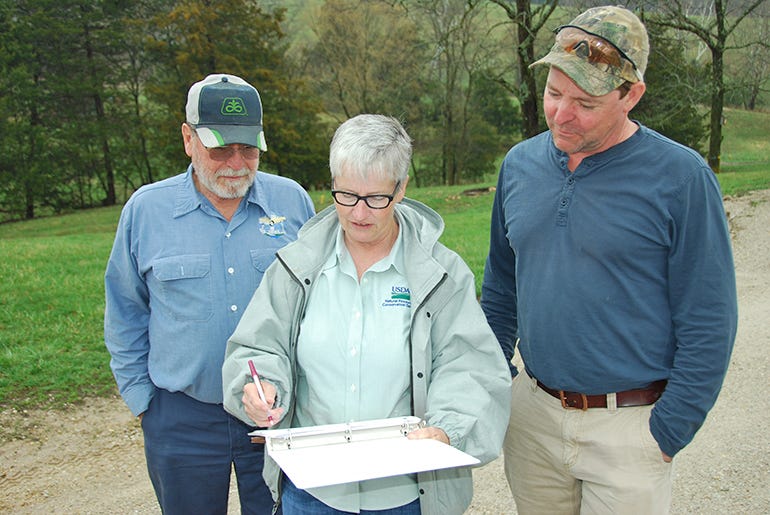June 17, 2019

Jason Erfling looks out over the hills that were part of the original 280 acres that his mother’s family purchased for $3,000 in 1864 from a Revolutionary War soldier, and he can still envision the toll that five previous generations of farming took on the land.
Then, and for several generations, “improvements” involved clearing timber, tilling the land and planting crops. Erfling’s improvements are focused on returning the land to the conditions for which it is best suited and adopting business practices to ensure a more efficient operation, which over the years has expanded to include about 1,000 acres of row crops in bottomlands.
“I’m operating it from more of a 21st century standpoint now,” Erfling says. “Strategies are different than they were in the ’80s. It’s maybe a little benefit to me to not have preconceived notions about how it had been done.”
Going home
Erfling is taking advantage of knowledge he gained by helping on the farm as a teenager and from his bachelor’s degree in business and the 16 years he spent in the business world after leaving the farm to attend college in 1990. His reasons for returning to farming in 2016 are more personal: His parents Wilmer and Josie Erfling, who had been operating the farm since 1979, needed help keeping the farm going.
“I wouldn’t be farming anymore if Jason hadn’t come back — because of the business part of it,” Wilmer says. “I couldn’t keep up with the technology, and I would have had to rely on someone to do the marketing stuff, because I just didn’t have the skill.
“Jason has a handle on what everything costs. I just knew how many bushels we got. But I didn’t have a clue about inputs. Technology makes it more possible to track that, but you have to know how to use it.”

PLANNING AHEAD: Wilmer Erfling (left) talks with NRCS district conservationist Tammy Teeter and his son, Jason, about the farm’s conservation plan.

Jason lives an hour away in St. Louis County. He says his decision to quit his business career and take over operation of the family farm would not work as well if Wilmer and Josie weren’t living at the farm to provide a local presence.
“For me to do this, it had to make sense economically, but there is also an emotional element to it,” he says. “People don’t have the means to start something like this. If you have it in place, it makes sense to keep it ongoing. But [Wilmer and Josie] were at an age where they couldn’t do all that was needed.”
Improving the land
Jason says his business decisions, which are the subject of daily lunches with Wilmer and Josie, are all about being efficient and respectful of the land.
“I’m not into making a lot of changes, but when changes are made, I want them to be back to the way things should be,” he says.
The changes included converting about 30 acres of cropland in upland areas to forage, using assistance from the USDA’s Natural Resources Conservation Service to improve grazing systems by installing water lines and fencing, and using cover crops to improve soil health.
Convincing Wilmer was not an issue. In fact, Wilmer first incorporated no-till at the farm, often at the dismay of his late father-in-law, Rubin Haeberle.
“It was a battle [with Rubin] every time we didn’t have a plow hooked up,” Wilmer says.
Yet Wilmer remembered that as a kid when he would walk behind the single-row plow his father was using, there would be lots of earthworms. He wasn’t seeing earthworms — which are present in healthy soil — on the Haeberle farm any longer, and he knew something was amiss. Wilmer says it’s easy today to know which of the nearby farmers still till.
“After a rain, if you drive down the road and see water standing in the fields, those are the ones who are tilling, because the water can’t infiltrate into that unhealthy soil,” he says.
Today, 100% of the corn and soybean acres on the Haeberle family farm are no-tilled.
“The family is very conservation minded,” says Tammy Teeter, NRCS district conservationist. “Two generations ago, they were plowing everything. Wilmer started no-tilling, and Jason is doing even more. Farming isn’t like it used to be; it’s more of a business.”
Jason says the business side of farming is essential for profits and preservation of natural resources.
“We have to do as well as we can with what we have,” he says. “Doing a better job with what we’ve got is better than paying bank notes on more land.”
Rahm is the public affairs officer for USDA-NRCS. He writes from Columbia, Mo.
About the Author(s)
You May Also Like




